Electric Cooker Installation Cost
Last updated 19th May, 2025
Are you looking for an electric cooker installation cost?
In this article we outline everything you need to know if you're considering getting an electric cooker.
We cover the price of an oven, connection fees, and UK regulations — as well as other considerations, such as hob installations to a complete kitchen refurbishment.
On average, cooker installation costs will range between £150 and £5,550 depending on the type of cooker and any additional services required (e.g., moving a socket or replacing a worktop).
Continue reading for more information!
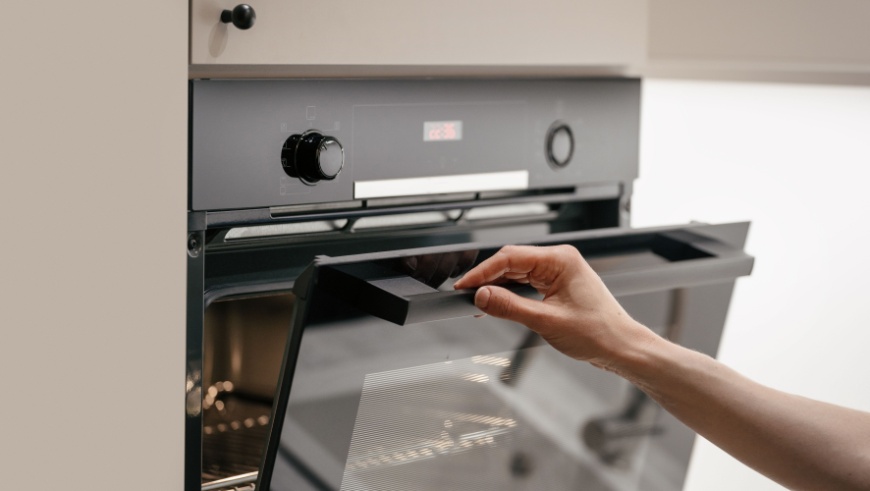
Table of Contents
- How much does an electric cooker installation cost?
- How much is a cooker?
- Additional electric cooker installation costs
- Labour cost to install an electric cooker
- Factors that impact electric cooker installation costs
- What does installing an electric cooker involve?
- Diy electric cooker installation
- Choosing an electric cooker
- Choosing an electric hob
- Choosing an electric oven
- Building regulations for installing an electric cooker
- Planning permission for installing an electric cooker
- Cost of electric cooker removal
- FAQs
- How to find and hire an electric cooker installer
- Sources
How Much Does an Electric Cooker Installation Cost?
Electric cookers can generally be classed under two distinct types, electric range cookers and freestanding cookers, with cost varying depending on the brands and features available.
Freestanding cookers are the more compact of the two and come with four plates, making them better suited to smaller households and kitchens. They are also considered the affordable choice, priced between £150 and £2,500. By comparison, electric range cookers are ideal for bigger families or larger kitchens and are more expensive ranging from £400 to £5,500.
Built-in ovens can vary in cost between £100 and £2,150 depending on the size, make and features. They are normally set at eye level and can be either a single or double oven, with the second oven often serving as a microwave or combination oven. Built-under ovens come with similar features, although tend to be slightly smaller, as they are installed under the kitchen counter. The average cost of a built-under oven ranges from £250 to £1,500.
If space is limited, then compact ovens are a good choice as they are designed specifically to fit in small spaces. Although they are smaller than most standard electric ovens, compact ovens tend to be more expensive costing between £350 to £3,000.
There is also the option of having a hob installation seperate from your electric oven. Solid plate hobs are often found in smaller or rental properties due to being affordable and durable, costing between £100 and £200. However, ceramic hobs (priced from £125 to £850) and induction hobs (£150 to £2,500) are known for being easier to clean and are more energy-efficient, making them an increasingly popular alternative.
The job of fitting a new electric oven and hob or cooker should only be carried out by a qualified electrician, and the cost of labour for this will depend on the area that you live in, and how long and complex the job is.
On average the cost of electrician prices are charged between £40 and £60 per hour in London and approximately £30 and £40 elsewhere in the country.
Electric Cooker Installation Prices
Below is the average cost for a qualified electrician to install a variety of electric cookers, hobs, and ovens.
The labour cost is calculated at 1-2 hours and 2-3 hours based on the appliance being fitted and therefore, the complexity of the installation.
| Product | Product Type | Price Range | Labour | Total |
|---|---|---|---|---|
| Electric Cooker | Range | £400-£5,500 | £70-£150 | £475-£5,650 |
| Freestanding | £150-£2,500 | £60-£120 | £200-£2,600 | |
| Electric Hob | Solid plate | £100-£200 | £60-£120 | £150-£325 |
| Ceramic | £125-£850 | £60-£120 | £175-£975 | |
| Induction | £150-£3,500 | £60-£120 | £200-£3,600 | |
| Electric Oven | Single | £100-£2,150 | £60-£120 | £150-£2,275 |
| Double | £250-£1,500 | £70-£150 | £325-£1,650 | |
| Built under | £250-£1,500 | £70-£150 | £325-£1,650 | |
| Compact | £350-£3,000 | £70-£150 | £425-£3,150 |
Gas Cooker Installation Cost
By comparison, the average cost to install a gas cooker ranges between £280 and £2,800. Although gas ovens can offer greater control in temperature and come with lower operating costs, electric cookers are often considered easier to maintain while providing a more consistent heat for cooking delicate items.
Fitting a gas cooker can take approximately 1-2 hours and should only be carried out by a qualified gas safe engineer. Unlike installing an electric cooker, you will also need a gas safety certificate which is required by UK law. This can be issued by the gas engineer at an additional cost of between £30 and £150 once they have completed any final safety checks.
How Much is a Cooker?
The below tables reflect the average prices of different types of electric cookers, hobs, and ovens without labour costs.
| Electric Cooker | Price Range | Average Cost |
|---|---|---|
| Range | £400-£5,500 | £2,600 |
| Freestanding | £150-£2,500 | £1,100 |
| Electric Hob | Price Range | Average Cost |
|---|---|---|
| Solid plate | £100-£200 | £140 |
| Ceramic | £125-£850 | £440 |
| Induction | £150-£3,500 | £1,110 |
| Electric Oven | Price Range | Average Cost |
|---|---|---|
| Single | £100-£2,150 | £950 |
| Double | £250-£1,500 | £680 |
| Built under | £250-£1,500 | £630 |
| Compact | £350-£3,000 | £1,300 |
Additional Electric Cooker Installation Costs
When installing a new electric cooker or hob, there may be some jobs that either need to be done or you can just take the opportunity to do at the same time.
Most electric cookers, ovens and hobs will need to be hard-wired by a qualified electrician and do not use a standard socket. However, to fit a single oven, an average socket will usually suffice, and this is generally fitted out of sight in an adjacent cupboard.
Or you may need to move a socket that is in the way of the location of your new electric cooker. Either way, the cost to do so will be around £75 to £150 depending on where you live in the UK.
One of the quickest ways to renew or refresh your kitchen apart from new appliances is to fit new kitchen worktops. This upgrade can give your kitchen a new lease of life and will cost between £400 and £2,000 depending on the type of worktop and the size of your kitchen.
Of course, new kitchen worktops may then show the age and condition of your kitchen cupboards. One of the quickest and cheapest ways to improve their appearance is to replace the cupboard doors. Depending on which type you choose and how many you need to replace this can cost between £350 and £1,100.
A new kitchen sink is a relatively cheap way to give your kitchen a lift and compliment a new appliance such as an electric cooker. The cost to replace your sink will depend on the type that you choose, but on average it will be £400 to £500.
Perhaps the installation of your new electric cooker is part of a complete kitchen refurbishment. The cost of a new kitchen suite will be between £5,000 to £15,000 but will depend on the quality of the units chosen, the size of the kitchen and where in the UK you live.
Electric Cooker Installation Cost Breakdown Calculator
Individual Costs of Supplying and Installing a New Freestanding Electric Cooker
Total Cost: £1,200
Materials
£1,080
Tradesmen
£120
Waste Removal
£0
Labour Cost to Install an Electric Cooker
The price of labour to install a new electric cooker will depend on the type of appliance that you are fitting and the area of the country that you live in. Qualified electricians should be used to carry out the fitting of electric cookers to ensure that the installation is done safely.
The hourly rate for an electrician in London and the south-east is around £40 to £60. In other parts of the UK, it is approximately £30 to £40 per hour. Of course, the time it takes to fit a new electric cooker or separate electric hob and oven will determine how much you will pay. Even if you are quoted a fixed price prior to the work commencing there may be unforeseen issues that mean the job takes longer and therefore costs more.
The installation of freestanding electric cookers should be relatively straightforward and relatively quick. At most, it should take one to two hours from start to finish unless there are any complications or problems.
A built-in oven and hob may take longer depending on whether any preparatory work is done in advance. If it is being done at the same time as a kitchen refurbishment, there may be the need to work around other trades such as carpenters, tilers, or decorators.
If you have purchased your electric cooker from a large retailer, they may offer an installation service. This can cost between £60 and £150 depending on the retailer and region of the country.
There are a few things that could add to the timeframes and labour costs when installing a new electric cooker. If your new appliance is different in terms of size or power from your old model, then there may be additional work that will be required. For example, a new electric cooker may require new cabling which an electrician will need to install.
Similarly replacing cheap electric cookers with more powerful modern models may require substantial additional wiring to be done before installation.
Factors That Impact Electric Cooker Installation Costs
The factors which will affect the cost to install electric cookers are the type of cooker, hob or oven, the area you live in and any additional work that may be required.
Electric freestanding cookers will usually be a quick installation job for a qualified electrician taking perhaps an hour or so. Of course, this may depend on whether an old cooker is being disconnected and removed and the suitability of the existing power supply.
Range cookers are bigger and may require two people to manoeuvre into place, which could increase the labour costs. The electrical installation of a range cooker will be similar to a freestanding cooker and should be carried out by a qualified electrician at the cost of between £30 and £60 per hour on average.
Electric hobs are varied in their plate types with induction, ceramic, and solid plates, but their installation should be reasonably similar in terms of installation. If the hob is part of a new kitchen or refurbishment, then it may be necessary to cut out the aperture for the hob from the worktop.
This will require experience of how to measure accurately and cut the worktop without damaging it and safely installing the hob, and it may be necessary to have someone do this for you.
Electric ovens will be either single or double whether they are built-in or built-under. A lot of single electric ovens will have a plug fitting which makes them relatively easy to install, but double ovens will need to be hard-wired.
This will, of course, have to be carried out by a fully qualified electrician, and the average cost of an electrician is between £30 and £60 per hour depending on where you live.
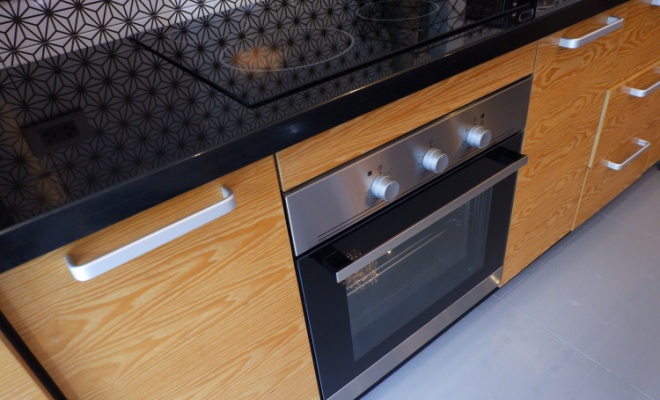
Built-in or built-under ovens should be carefully selected to ensure that they will fit into the kitchen unit carcass. Single ovens will have a standard width of around 60cm, but the height might vary so check the measurements carefully before purchasing or finalising carcass dimensions in the kitchen.
Double ovens will typically be the same width as a single oven, but obviously, the height will differ, they are normally around 90cm. It is essential to check that the dimensions are appropriate for your opening or you may have to alter the kitchen unit carcass, which may be costly.
Of course, the quality of the electric cooker, hob, or oven that you choose will have the most significant effect on the cost. There are electrical brands which are very highly rated and will attract a similarly high price tag, and while cheap electric cookers may be attractive to the pocket, they may not last very long.
Particularly with electrical equipment, it is worth investing in a reputable and known brand for safety as well as for economic reasons.
The amount of wiring and electrical work that will be needed for the installation of your new electric cooker, hob or oven will also have an impact on the amount that you pay. Some old wiring may not support more powerful appliances and need to be replaced.
While replacing like for like should not prove too expensive if you are upgrading to a more complex product, it is essential to have the right wiring and power supply installed.
What Does Installing an Electric Cooker Involve?
Most electrical installations will require the services of a qualified and registered electrician who will comply with IEE regulations.
Unless you are replacing a like for like plug-in appliance such as a single oven the cost to install electric cookers will usually include hiring an electrician. Some installations will be brand new, and some will be replacing an older appliance with an upgrade. This guide will be for a brand new electric oven and hob.
Preparation
To ensure a safe installation, it is important to have a clear workspace and the correct safety equipment. For any drilling or cutting, for example, to install a hob in a worktop, safety goggles and gloves should be worn.
Ensure all measurements are correct and double-checked prior to installation. A gap of between 3cm-3.5cm should be allowed between the appliance and the surrounding cabinet or walls.
The installation area should be level, even and strong enough to hold the appliance and heat resistant to at least 100°celsius.
Power supply
For an oven that is under 3Kw, a 13amp plug is sufficient, but anything above this will need to be hard-wired into a 32-amp outlet with 6mm cable. An induction hob uses more power and will require a 45amp circuit breaker and 10mm cable. The appropriate power supply should be close nearby and no more than 1.5 metres away but not directly above the cooker or hob.
Installation
Prior to any electrical work being done, the mains should be switched off. Before installation check the packaging of the new appliance, if there is any sign of damage, it should not be installed as there may be unseen damage to the appliance which could be potentially dangerous.
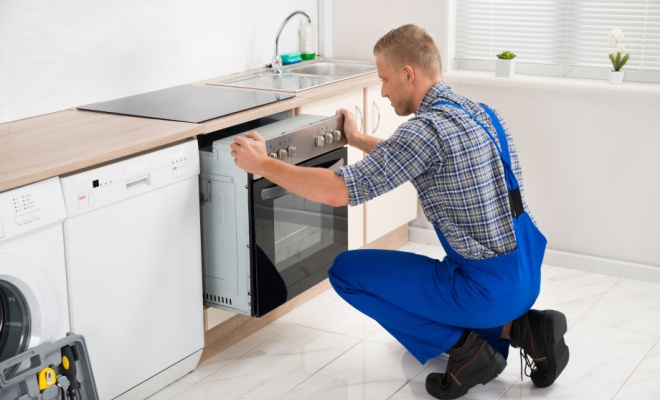
When removed from the packaging and checked for damage, a built-in oven can be placed into the prepared recess or kitchen unit carcass. It is then fixed in place with supplied screws by opening the oven door and accessing the fixing points. Check the gaps on all sides before fixing into place.
Once secured, all packaging material should be removed from the oven before testing that it is fully operational. A plug-in model can be plugged in and all the features checked to ensure that it works properly. First use of a new oven can result in some smoke and odour, which is entirely normal, and fitters should inform clients of this.
Hard-wiring
Ovens which are above 3kw of power will need to be hard-wired with the appropriately sized cabling and sufficiently powered circuit breaker usually of at least 32 amp. With the importing of high specification ovens from Europe over the last decade, the power requirements increased, and a 13-amp plug was no longer adequate with these appliances needing 16amp power.
This led to the need to hard-wire ovens which demanded more power such as self-cleaning models and those with pre-heating features. All ovens will have a rating plate usually inside the oven door, which shows its wattage and what amp power will be required.
A 45amp double pole cooker connection unit and switch are normally required, and this serves as a safety feature and means of isolating the cooker. Typically, 6mm twin and earth cable is used from the consumer unit to the double pole cooker switch and also from the cooker switch to the cooker connection unit.
A 32-40amp mini circuit breaker will be required for the cooker circuit depending on the load that will be connected.
Electric hobs require a distance from hob to overhead extractor hood of at least 65cm but always refer to the manufacturer’s instructions. Distance from hob to any switches and sockets should be no less than 30cm for safety reasons. A separate connection unit can be used for the hob and the cooker to avoid possible overloading of the circuit if both appliances are used to maximum capacity at the same time.
Checks
All features of the oven, hob or cooker should be checked once it is fully installed. An oven should be run to eliminate manufacturing residues, and this is usually done at high temperatures to aid the burn-off of factory deposits. Each plate of a hob should be tested to ensure that they are all in working order and that all the controls work.
DIY Electric Cooker Installation
Some electrical installations can be carried out as a DIY project, but this would typically be only for those appliances that are plugged into a 13-amp socket. Other than these types of jobs it is advisable to leave the electrical installation to those professionally qualified to carry them out.
There are some very obvious dangers of DIY electrical work. Installing electric cookers is one area that is best left to a suitably qualified electrician. The potential for injury and death by a poorly installed electrical appliance is huge, as is the potential for the installation to cause a fire.
If there are some aspects of an electrical cooker installation that can be done DIY, then this would be something like cutting an aperture in a worktop for a hob or constructing a kitchen unit carcass for a built-in oven.
A DIY enthusiast should avoid anything else that actively involves wiring. The savings of not employing a qualified electrician could be widely outweighed by the possibility and potential for injury or death due to a poorly fitted cooker, oven or hob.
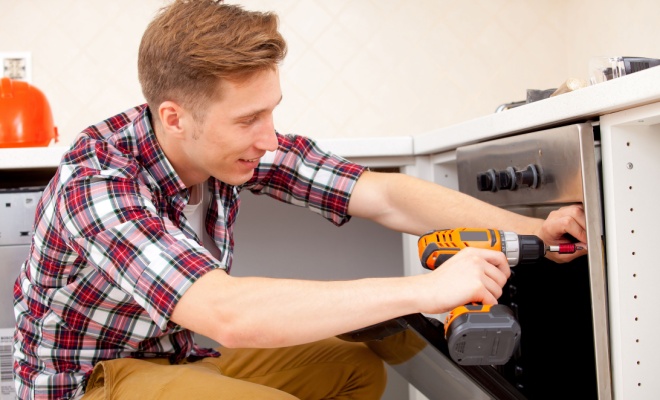
For constructing carcasses for a built-in oven or cutting a hob aperture safety clothing such as safety goggles and gloves should be worn.
The Building Regulations that apply to fitting an electric oven, hob or cooker involve notifiable works which include installing a new circuit. This work is covered by Part P of the Building Regulations. As such, this job will need to be completed or signed off by a person who is registered under a competent person scheme.
If a new circuit is not installed and the existing circuit used, then there is no need to inform building control of the work. However, the installation should still be carried out by a qualified electrician.
Choosing an Electric Cooker
The two main types available are electric freestanding cookers and range cookers.
Freestanding Electric Cooker Cost
Electric freestanding cookers are more affordable than the larger electric range cookers. Although they are relatively cheap electric cookers, there are some stylish and powerful models on the market.
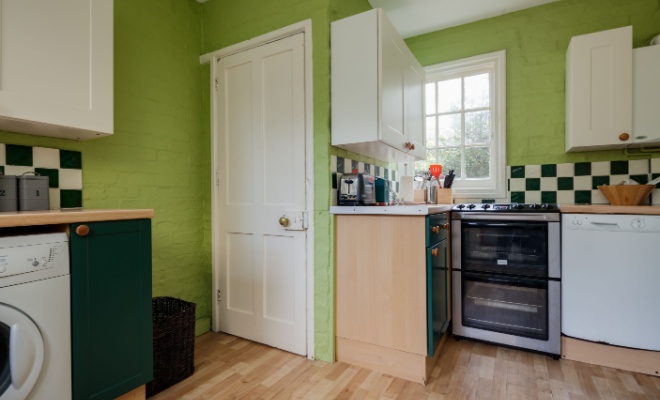
The average cost of a freestanding electric cooker is £1,100 depending on brand and features.
Pros of a freestanding electric cooker:
- ✔ Straight forward to install.
- ✔ Less expensive than a range cooker.
- ✔ Lots of styles and models to choose from.
Cons of a freestanding electric cooker:
- ✖ May not offer the capacity of a range cooker.
- ✖ Will take up space otherwise occupied by kitchen storage cupboards.
- ✖ Not as stylish or modern looking as built-in options.
Range Electric Cooker Cost
Range cookers are larger than most freestanding cookers and offer a bigger cooking capacity.
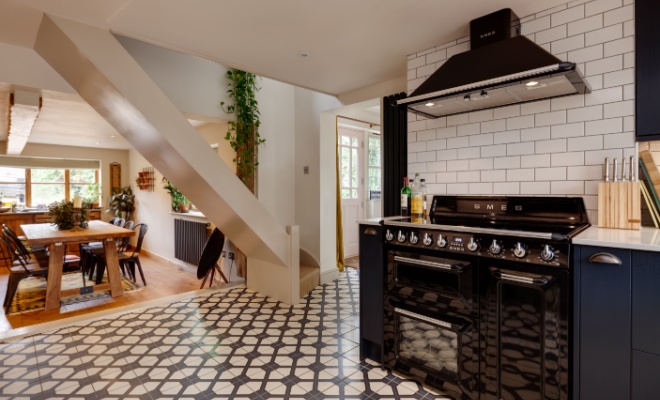
The average cost of an electric range cooker is £2,500 depending on the make and model.
Pros of an electric range cooker:
- ✔ Larger capacity than most freestanding cookers.
- ✔ Suitable for larger families.
- ✔ Stylish and sturdy.
Cons of an electric range cooker:
- ✖ More expensive than freestanding electric cookers.
- ✖ Not suitable for smaller kitchens.
- ✖ Will take up more floor space than most other cookers.
Choosing an Electric Hob
There are three main types of electric hob types, solid plate, ceramic, and induction.
Solid Plate Electric Hob Cost
Solid plate hobs are the descendant of the older heated metal coils which can still be found although not as popular.
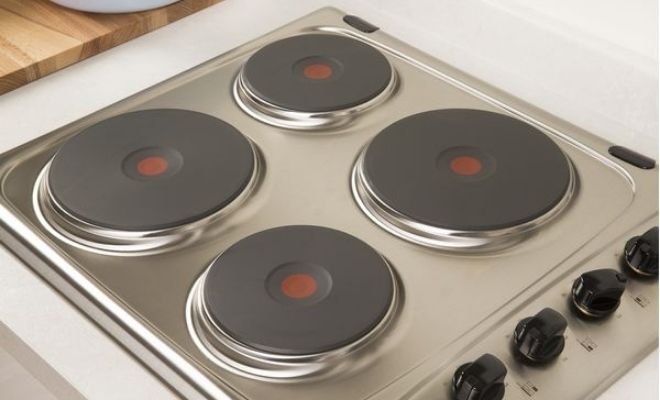
The average cost of a solid plate hob is £140, although it will depend on the make and design.
Pros of a solid plate hob:
- ✔ The most affordable type of hob.
- ✔ Tough and durable.
- ✔ Simple and easy to use.
Cons of a solid plate hob:
- ✖ More difficult to clean.
- ✖ Solid plates are slower to heat up than other types of hob.
- ✖ Not as stylish as induction or ceramic hobs.
Ceramic Electric Hob Cost
The surface of a ceramic hob is a tough, shatterproof glass which can withstand high temperatures.
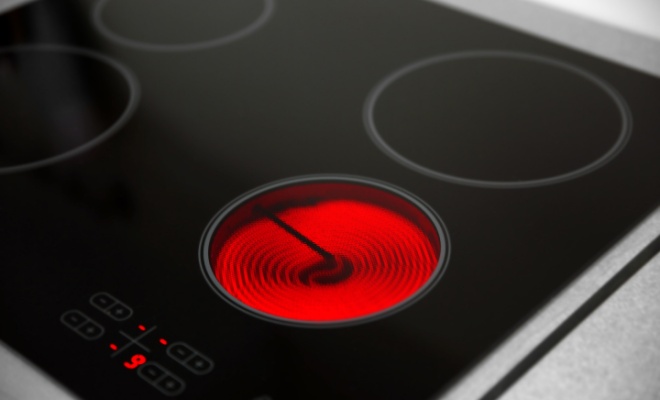
The average cost of a ceramic hob is around £450 depending on the make and specific model.
Pros of a ceramic hob:
- ✔ Stylish and efficient.
- ✔ Easy to clean.
- ✔ Safety features such as residual heat indicators.
Cons of a ceramic hob:
- ✖ Can be damaged if something is dropped onto the surface.
- ✖ More expensive than solid plate hob.
- ✖ Surface can take a long time to cool down, making it potentially dangerous for small children.
Induction Electric Hob Cost
An induction hob may look like a ceramic hob, but it works differently. A magnetic field is created around the induction element and the base of the cookware heating only the pan and not the cooker surface.
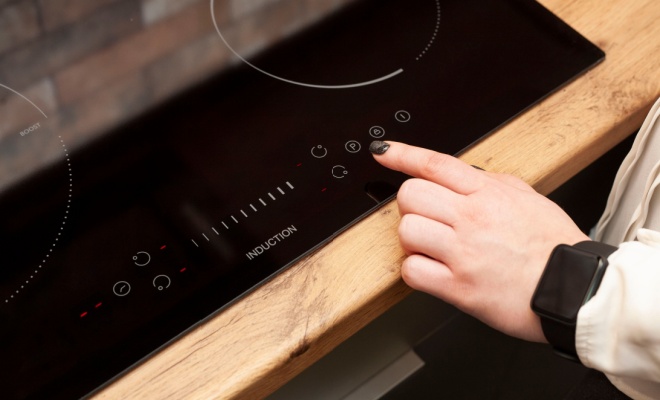
The average cost of an induction hob is £1,100, which reflects its unique way of heating pans and cookware.
Pros of an induction hob:
- ✔ Only heats the base of the pan and not the cooking surface.
- ✔ Does not waste energy heating the surrounding area.
- ✔ Surface stays relatively cool, making it safer for children and vulnerable people.
Cons of an induction hob:
- ✖ Most expensive hob on the market.
- ✖ Can only be used with cast iron, steel, or specially coated cookware.
- ✖ May not be suitable for people with a pacemaker due to electromagnets.
Choosing an Electric Oven
There are many types of electric oven available such single, double, and compact ovens which can be either built-in to a kitchen unit or built-under to sit beneath a counter.
Single Electric Oven Cost
Single ovens are usually around 60cm wide by 60cm high and can often be plugged directly into a 13 amp socket.
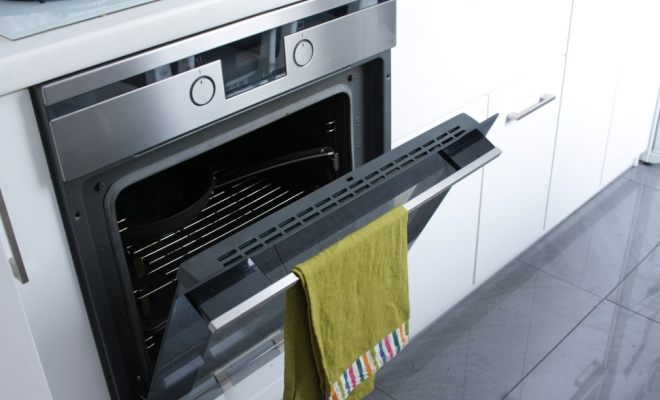
The average cost of a single oven is £950 depending on brand and features.
Pros of a single oven:
- ✔ Can often be fitted as a DIY project if it comes with a 13amp plug.
- ✔ Ideal where space is limited in a kitchen.
- ✔ Suitable for smaller households.
Cons of a single oven:
- ✖ Oven and grill cannot be used simultaneously.
- ✖ Restrictive when cooking large meals or for special occasions.
- ✖ Relatively expensive for limited space.
Double Electric Oven Cost
There are double ovens which are built-in, generally at eye level and those that are built-under which tend to be smaller.
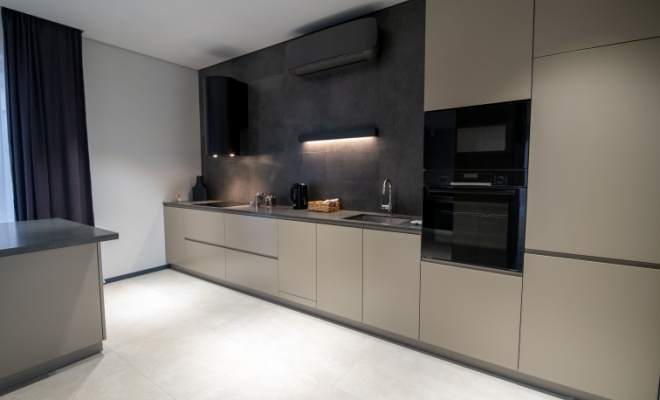
The average cost of a double oven is £700 depending on the make and included features.
Pros of a double oven:
- ✔ Suitable for larger households.
- ✔ Oven and grill can be used at the same time.
- ✔ Dishes needing different temperatures can be cooked simultaneously.
Cons of a double oven:
- ✖ Takes up more room than a single oven.
- ✖ Built-under double ovens are often not very large.
- ✖ Fewer models to choose from.
Built-under Electric Oven Cost
A built-under oven will be sited underneath the kitchen counter as opposed to a built-in oven which is fitted at eye level in a kitchen unit.
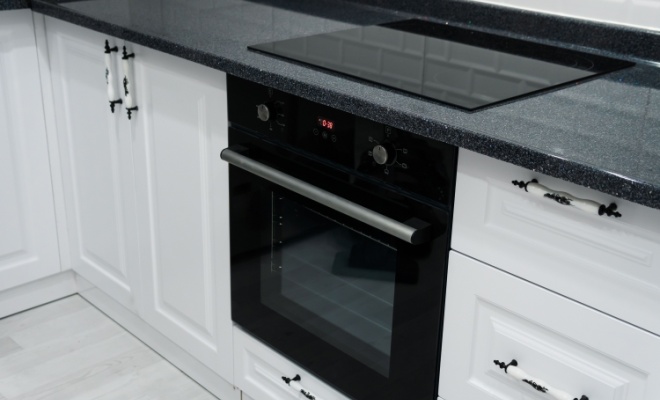
The average cost of a built-under oven is £650 depending on make and model.
Pros of a built-under oven:
- ✔ Space-saving option.
- ✔ Designs are mostly sleek and modern.
- ✔ Most built-under ovens are double giving versatility.
Cons of a built-under oven:
- ✖ Smaller than built-in ovens, 70cm high as opposed to 90cm for built-in.
- ✖ Due to size, most will have only one shelf.
- ✖ Relatively expensive for their size.
Compact Electric Oven Cost
A compact oven is precisely as it sounds, a small oven designed to take up minimal space in a kitchen.
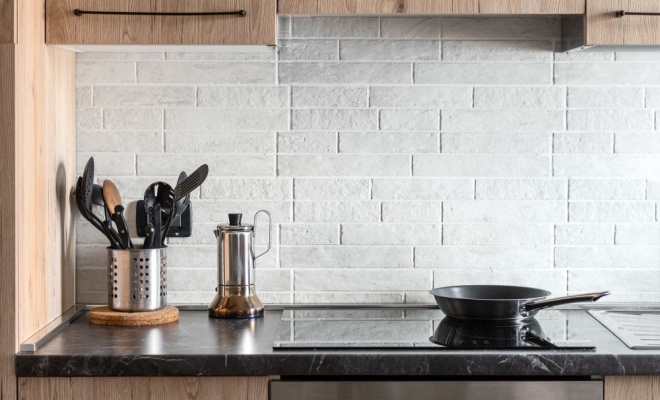
The average cost of a compact oven is £1,300 depending on the brand and the model.
Pros of a compact oven:
- ✔ Suitable for small kitchens or kitchenettes.
- ✔ Combines multiple features and cooking methods.
- ✔ Stylish and easy to use.
Cons of a compact oven:
- ✖ Quite expensive for the size of the oven.
- ✖ Has limited capacity.
- ✖ Some models can be overly complicated.
Building Regulations for Installing an Electric Cooker
Installing a new cooker is not notifiable works under Building Regulations, but if you are installing a complete new circuit for a cooker, then this would fall under Part P of the Building Regulations.
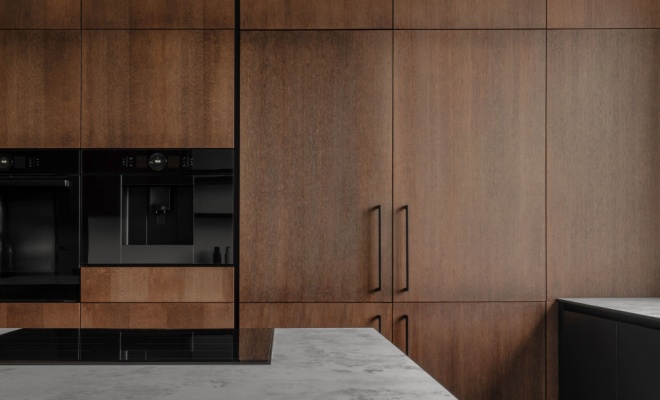
All information regarding Building Regulations for electrical installations can be found on the Planning Portal.
Planning Permission for Installing an Electric Cooker
There is no requirement to apply for planning permission to install a new electric cooker in your home.
Information about planning permission can be found on your local authority’s website or council offices. General information can be found on the government website.
Cost of Electric Cooker Removal
You may wish to remove an electric cooker to replace it with a different fuel type such as gas or solid fuel, you may want to upgrade to a better model or your electric cooker, hob or oven may have stopped working.
Whatever the reason for removal it is likely that your electric cooker, oven, or hob is hard-wired in and as such it is advisable to seek the services of an electrician. The average cost of hiring an electrician in the UK falls between £30 and £60 per hour depending on the area of the country that you live in.
Some lower wattage ovens may be fitted with a 13-amp plug, and if you are replacing this appliance, it is possible to remove it as a DIY job. Any hard-wired electrical appliances, however, should be left to a fully qualified electrician to remove for safety reasons.
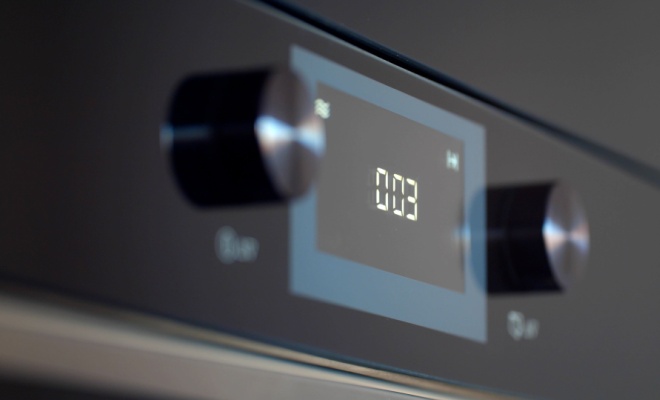
Most local authority recycling facilities have an area for discarded large electrical items, but you should contact them to check before taking your old cooker there. Normally there is no charge for this.
If you do not have transport to take your old electric cooker to the recycling centre, you can contact the local authority to collect and dispose of it. There will generally be a fee for this service, and you should check what this will be before requesting the disposal.
FAQs
Unless the appliance is fitted with a 13 amp plug and can simply be unplugged and removed, it is not a job for DIY enthusiasts.
Ceramic and induction hobs are covered in toughened glass and very easily maintained by simply wiping with a damp cloth and detergent.
The surface of the induction hob does not get hot making is safer for children and other vulnerable people. Induction hobs can only be used with pans which have a magnetic property such as cast iron or steel.
However, there may still be toxic fumes associated with a self-clean oven, so there should be adequate ventilation during the process. Catalytic cleaning does a similar job but not at such high temperatures, and some grease may need to be manually removed.
How to Find and Hire an Electric Cooker Installer
If you need or want to install an electric cooker, hob, or oven in your home, you will need to know how to hire someone to do this work.
Why Hire an Electrician?
The majority of electric ovens, cookers and hobs are above 3kw and so will need to be hard-wired into a circuit. This is not something that a DIY enthusiast should attempt as a badly fitted electrical appliance could cause injury, fire, or death.
Average Cost
The hourly rate for an electrician in the UK ranges between £30 and £60 per hour on average although you may be given a fixed price if the installation of your electric cooker is the only job you require.
What to Look For
You can ask friends or family for recommendations for a qualified electrician that they may have previously hired. However, you should be confident that anyone recommended is adequately qualified, experienced and has the necessary certification for the work they will be carrying out. It is also advisable to use someone who is well established with a good reputation.
Qualifications
The qualifications an electrician should have to install a cooker in your home will be as a domestic electrician. This is obviously different from commercial or industrial, which would not be applicable in a domestic situation.
Experience
Most electricians will train initially as an apprentice for two to four years with an experienced electrician. They will gain practical knowledge and skills, and at the same time study theory at college, this normally leads to an NVQ Level 2 & 3 or similar.
Experience is gained through working under supervision until all relevant qualifications have been obtained, and the apprentice is then qualified to work independently.
Accreditation
Qualified electricians should be registered with a recognised competent persons scheme in the UK such as NICEIC, NAPIT, Elecsa, or similar and willing to provide evidence of this.
Insurance
All tradespeople working in or on your property should have adequate and appropriate insurance such as public liability insurance or professional indemnity insurance. You can ask for proof to ensure this is the case in order to protect your property and your family.
Check Qualifications and Certifications
It is acceptable to ask for proof of qualifications, accreditations, and insurance for someone who is going to be carrying out work in your home and most professional contractors will not have a problem providing this information.
Sources
https://www.hse.gov.uk/electricity/standards.htm
https://www.planningportal.co.uk/permission/common-projects/electrics/building-regulations-general-information
https://www.electricalsafetyfirst.org.uk/
https://support.aeg.co.uk/support-articles/article/how-do-i-connect-my-electric-ceramic-or-induction-cooker-to-the-power-supply?locale=en-GB
https://www.saleappliancesltd.co.uk/l/hobs








